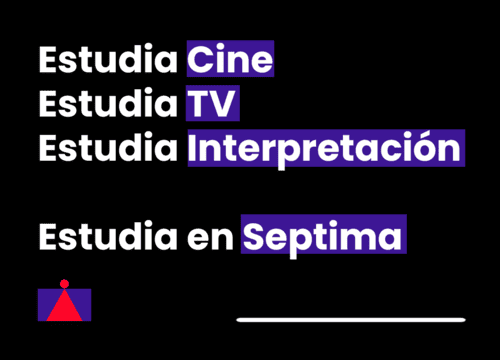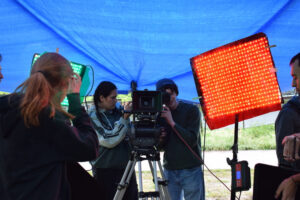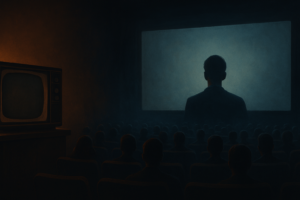El veterano escritor británico John Yorke sabe algo de esto de escribir guiones y de los oficios del medio audiovisual pero lo mejor es que quiere compartir con todos nosotros su sabiduría.
«John Yorke is a former head of drama for both the BBC and Channel 4 and has worked on or commissioned shows as diverse as EastEnders, Life on Mars, The Archers, The Street and Shameless. He’s currently managing director of independent TV producers Company Pictures. His new book, Into The Woods: A Five Act Journey Into Story (Particular, £16.99) is an in-depth study of and guide to stories and narrative and a primer for any budding screenwriter (or any kind of writer). We asked him for his 10 top tips for telling stories.
The architecture of all stories is pretty much the same
Take just one story: a dangerous monster threatens a community and one person takes it upon himself or herself to kill the beast and restore happiness to the kingdom. It’s the story of Jaws. But it’s also the story of Beowulf. And it’s more familiar than that: it’s The Thing, it’s Jurassic Park, it’s The Blob – all films with tangible monsters. If you recast the monsters in human form, it’s also every Bond film, every episode of Spooks, House or CSI. You can see the same shape in The Exorcist, The Shining, Fatal Attraction, Psycho and Saw. The monster may change from a literal one in Nightmare on Elm Street to a corporation in Erin Brockovich, but the underlying architecture – in which a foe is vanquished and order is restored – stays the same.
Without empathy your work won’t work
A whole generation remembers how they flinched when they saw the fisherman’s decapitated head fall out of the boat in Jaws. Professor Christian Keysers of the Netherlands Institute for Neuroscience has conducted extensive research into the way we watch – and react to – stories and his analysis suggests that when empathy works we become one, physiologically, with the protagonist. Think of how your body reacts when you watch the laser beam creep closer to Bond’s groin in Goldfinger. Watching someone being hit activates the same areas of the brain as being hit – the physiological reactions, though not the pain, are identical. Stories thus place us all on the same wavelength. We live what our protagonists live. If that connection doesn’t take place then any narrative simply won’t work.
Studying screenwriting is older than screenwriting itself
The rules that govern screenwriting are the fundamentals of narrative and there’s a whole history of structural analysis preceeding the advent of film. What screenwriters now call Inciting Incidents (the explosion in a characters life that kick starts a story) were articulated as long ago as 1808 by AW Schlegel. The rise of film was inevitably accompanied by a rise in screenwriting gurus pedalling «how to» manuals – and Epes Winthrop Sargent has some claim to being the first. His The Technique of the Photoplay, written in 1912, is not only hugely entertaining, it has the virtue of being refreshingly honest. Much wisdom can be found in Sargent’s book, but it’s here that the drive to understand structure has become no longer an intellectual pursuit, but a profit-driven enterprise…»
Leer el artículo entero: www.independent.co.uk






